Success in fantasy football isn't all about readiness for your draft. If you think your work is done once you've studied only the top 192 names to choose from for your 12-team draft and locked in your initial roster, you're in for a rude awakening.
This game changes swiftly and often dramatically, and the best-suited fantasy managers are ones with far deeper knowledge than merely the player pool for the initial draft. Possessing the requisite knowledge of players who will pop up as September waiver-wire adds gives you a head start on your competition, and if you play in a 14-team league or deeper (think: expanded benches, as is the case in a few of my leagues), those final-round picks often make a huge difference in your team's outcome.
That's where this column comes in: Annually, I provide a list of 10 "deep sleepers," players who by all accounts will not -- and generally should not -- be drafted in a single 12-team standard ESPN league, but who have a far-better-than-the-rest chance from that area of the player pool of making an in-season difference in a league of that size or greater. Familiarize yourself with each of these names and, to a lesser extent, their team situations, as each could become relevant with a few lucky breaks.
To reiterate, this is a deep sleepers column, not one where you'll find "regular" sleepers like Tua Tagovailoa, Zack Moss, Laviska Shenault Jr. or Adam Trautman, as much as I do like all four. Those are commonly mentioned names across ESPN's (and the industry's) pages, and far more relevant players due to their viable-late-pick status in our standard game offerings. This list takes the exercise a step deeper, but understand that with greater speculation comes heightened odds of failure. We're talking skills here, generally speaking, and sometimes their roles never do align.
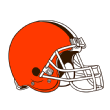
Harrison Bryant, TE, Cleveland Browns: He's an excellent example of a player with the skills to thrive, but a role that looks positively miserable initially, as Bryant is set to begin 2021 third on the Browns' depth chart, behind Austin Hooper and David Njoku. Nevertheless, Bryant, the team's 2020 fourth-rounder, outscored Njoku in fantasy last season, and his team utilized two tight end sets more often than any team in the NFL (531 offensive plays). A solid route runner with above-average hands, Bryant reportedly added muscle during the offseason, something that should help him win more contested catches and potentially expand his receiving role. I was a bit surprised the team brought Njoku back; it's not unthinkable that Bryant could cut into Njoku's role this season and push himself into the positional top-15.
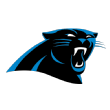
Sam Darnold, QB, Carolina Panthers: Here's a name you know, but through three NFL seasons, Darnold has failed to realize the lofty potential laid out when he was made the No. 3 overall selection in 2018. He has finished as QB27, QB27 and QB33 in his three seasons, starting at least three-quarters of the New York Jets' games in each of those years, but the team moved on from him during the offseason, trading him to Carolina. Darnold now resides in a much better offensive situation, where Christian McCaffrey, DJ Moore, Robby Anderson, Terrace Marshall Jr. and even Dan Arnold give him a much-improved set of receivers, and everyone seems to feel that offensive coordinator Joe Brady might cure what ails Darnold more than Adam Gase could. Darnold still has great arm strength, brings good mobility and he's capable of making the big plays. They're things that give him a top-10 fantasy quarterback's ceiling if everything clicks. But will a change of scenery, and a better situation, result in a turnaround for someone whose decision-making has been the No. 1 area of concern? Hey, this is why we call them "deep sleepers." The ingredients are there, in a way that isn't true for most of the other quarterbacks ranked in his range.
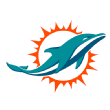
Gerrid Doaks, RB, Miami Dolphins: The team's seventh-round draft pick, Doaks is a plenty capable three-down back, albeit one lacking either elite speed or burst. Does that sound familiar? It should, as his competition from within the Miami backfield, namely Myles Gaskin, Salvon Ahmed and Malcolm Brown (though he fits the power back mold better than the others), fit similar descriptions. That the Dolphins are content changing running backs when they see an opportunity, too, helps any of these players' cause, as one great game might be all it takes for an individual to grab hold of a starting job. Doaks' advantage over his competition is his age (he's 23) and therefore less wear and tear, so keep tabs on his progress in the season's early weeks.
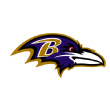
Devin Duvernay, WR, Baltimore Ravens: Classify his rookie campaign a disappointment if you wish -- and if you want to do so citing his four total receptions in his three second-half games in which he played 23-plus snaps, I could hardly blame you -- but let's not forget how lengthy the NFL's learning curve is, and the fact that he broke in with the league's most run-heavy offense. That part might not have changed much entering 2021, but this team has to throw at least a little more, no? Duvernay has incredible speed, having been a high school state champion sprinter, and his rookie metrics weren't as bad as they seem. His 76.9% catch rate and 6.23 yards after the catch finish well above league average. Sure, he's a better fit as a slot receiver -- a role Sammy Watkins initially figures to fill -- than on the outside, but Watkins' injury history suggests Duvernay should get his chances in time. Don't give up on him yet.
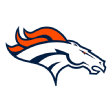
KJ Hamler, WR, Denver Broncos: He failed to impress as a rookie, held to 5.0 PPR fantasy points or fewer in six of 10 games in which he played at least 30 snaps, and he comes with the curse of being at best the No. 4 target in what's projected to be a below-average passing offense. Still, Hamler brings elite speed despite his smallish size (5-foot-9, 178 pounds), and he was plenty productive when lined up out of the slot, where he scored 56.3 of his 90.1 PPR fantasy points. He'd need to open eyes during the preseason to be a factor in the season's early weeks, but even if he begins as the No. 4 wide receiver on the depth chart, he's considerably more talented than other players in that spot around the league. Hamler is a classic "draft skills over roles" pick in the late rounds.
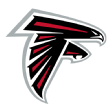
Javian Hawkins, RB, Atlanta Falcons: A smallish back at 5-foot-9, 195 pounds, which is probably a large part of the reason he went undrafted, Hawkins exceeded scouts' expectations in his final two seasons at Louisville, totaling 2,347 yards and 16 touchdowns rushing in 21 games. He subsequently latched on with the Falcons, where he'll be part of a backfield that's up in the air behind Mike Davis. Hawkins is battling Qadree Ollison, Cordarrelle Patterson and fellow undrafted rookie Caleb Huntley for the backup job. That's not a lot of top-shelf competition, including Davis, who did a fine job filling in for the injured Christian McCaffrey last season but was maddeningly inconsistent, especially late in the season when he was held beneath 9.0 PPR fantasy points in six of nine games. Hawkins' speed might be a handy tool for new coach Arthur Smith, whose Tennessee Titans offense from 2019-20 was the league's fourth- (47.0% of all offensive plays) and third-most (50.6%) run oriented, respectively.

Van Jefferson, WR, Los Angeles Rams: I list these players alphabetically, but when picking between 2020 rookie receiver disappointments, give me Jefferson over Hamler. Jefferson is similarly speedy, brings more size (6-foot-1, 200 pounds), and he did catch Jared Goff's eye on the occasional deep ball, highlighting his big-play potential. But here's the big difference between the two: Jefferson is in a much better team situation entering 2021, now the expected No. 3 receiver following the free-agent departure of Josh Reynolds, and the Rams have upgraded at quarterback from Goff to Matthew Stafford. Remember, Sean McVay has never been afraid to line up three wide receivers, so Jefferson has a great opportunity for a big step forward.

Xavier Jones, RB, Los Angeles Rams: Cam Akers' season-ending Achilles injury has opened up a golden opportunity in L.A., where the offense should be better because of the aforementioned QB upgrade, but the early buzz about who benefits has almost entirely centered around Darrell Henderson Jr. Considering Henderson's injury history, however, the race for roles behind him is compelling, with Jones, a 2020 undrafted rookie, particularly appealing. Jones was limited entirely to special teams as a rookie, but he turned in 1,276 yards and 23 touchdowns rushing in 2019 at SMU, where he got good marks for his vision and proved a more-than-capable rushing and receiving back. Jones will have his hands full holding off seventh-round pick Jake Funk for the No. 2 depth chart role, but he has gotten good marks from coach Sean McVay throughout the offseason and has both the statistical ceiling and prospective role expansion you rarely see from a player going as late as he is in drafts.
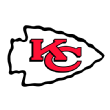
Byron Pringle, WR, Kansas City Chiefs: This one's less about skills speculation than it is a potentially larger-than-expected role, as Pringle, who turns 28 in November, enters 2021 as a fourth-year undrafted rookie with 25 career NFL catches. The Chiefs, blessed with the game's best passer in Patrick Mahomes, are sure to make more than two receivers (No. 1 wideout Tyreek Hill and tight end Travis Kelce) fantasy-relevant, and while Mecole Hardman is getting all of the early preseason buzz, Pringle got more opportunity while Sammy Watkins was sidelined during the Super Bowl. Part of that is Pringle's fit in the slot, which was Watkins' former role, but it also speaks well of Pringle that he managed to be better than league average in yards after the catch, air yards and catch rate. It shouldn't come as a complete shock that the Chiefs spoke so highly of him in the preseason's early stages. Hardman is the receiver fantasy managers -- and surely also the Chiefs -- would like to see step up to be Mahomes' No. 3 target, but Pringle isn't a far cry behind.

Larry Rountree III, RB, Los Angeles Chargers: New head coach Brandon Staley is an unknown in the role, and new offensive coordinator Joe Lombardi has more of a history of leaning on the pass than run, but when I hear Lombardi remark that he envisions Austin Ekeler as a Reggie Bush/Alvin Kamara/Darren Sproles-type, I can't help but wonder who might then be his team's Deuce McAllister/Pierre Thomas/Mark Ingram II? Ekeler probably isn't the kind of back who can handle 250-plus rushing attempts with ease, not with all that receiving work, but neither Justin Jackson nor Joshua Kelley seem like a lock in that complementary role. In fact, Jackson is oft-mentioned as a cut candidate. Rountree has immediate appeal in short-yardage situations, thanks to his 211-pound frame, and while the preseason will ultimately settle the backup role, he's the one I want as far as a raw-skills selection.
